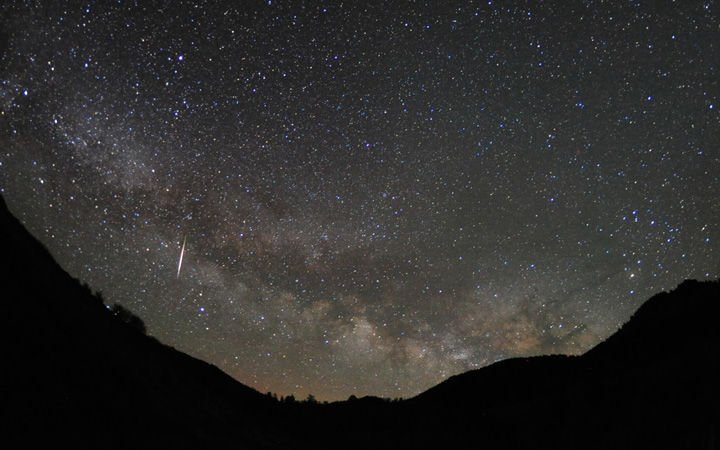
Photo: A Lyrid Meteor Shower is about as bright as the Big Dipper | Jimmy Westlake, NASA
By Kevin Schindler
As featured on the Arizona Daily Sun website on April 10, 2021
In less than two weeks, the annual Lyrid Meteor Shower will show its stuff. With an expected peak of 10-20 meteors per hour, it’s not as prolific as several of its sister showers but typically makes up for this with bling, showcasing some especially bright meteors called fireballs.
The Lyrids are so named because they appear to radiate from the constellation Lyra, the Harp. In reality, they have nothing to do with this pattern of stars but instead are linked to fragments of a comet that burn up as they speed through Earth’s atmosphere at some 110,000 miles per hour.
This parent body, officially designated Comet C/1861 G1 (Thatcher), is a long-period comet. This is a category of comets whose members often exhibit highly inclined orbits in relation to the ecliptic (the sun’s apparent path across the sky). They take from hundreds to thousands of years to orbit.
American amateur astronomer A.E. Thatcher first reported this one in 1861, when it last reached its closest approach to the sun (perihelion) and came within about 31 million miles of Earth. By comparison, Venus’s average distance from Earth is 25 million miles. With a 415-year orbit, Comet C/1861 G1 (Thatcher) won’t visit the inner solar system again until the year 2276.
…at midnight, stars fell like rain.” — Zuo Qiuming (556–451 BC)
Each part of a comet’s name tells something about it. In the case of C/1861 G1 (Thatcher), the letter “C” means it is a long-period comet and 1861 indicates the year of discovery. The letter “G” refers to the first half of April and the number “1” means it was the first comet discovered in that specific half-month period of time. “Thatcher” is, of course, the discoverer.
While this comet has been known for less than two centuries, its fragments that manifest themselves as Lyrid meteors have been observed for more than two millennia. The earliest recorded observation dates back to 676 B.C. Evidence of this sighting is found in Zuo zhuan, an archaic Chinese text documenting significant episodes from the 8th through 5th centuries B.C. While the “Zuo Tradition,” as it’s often translated, focuses on political and military activities, it does touch on a few aspects of history and culture. One passage describes a particularly active Lyrid meteor shower display, when the skies lit up and “at midnight, stars fell like rain.”
The Lyrids run from April 16 to 30 but peak in the early morning hours of the 22nd. Scientists don’t expect such an abundance of meteors this year as in 676 B.C., plus the waxing gibbous moon — it is two days past the First Quarter phase, setting at around 2:45 a.m. — will wash out many of the streakers.
Though the viewing may not be as stimulating as the ancient Chinese experienced, we might modify Norman Vincent Peale’s axiom “Any action is better than no action” with “Any meteor is better than no meteor.”